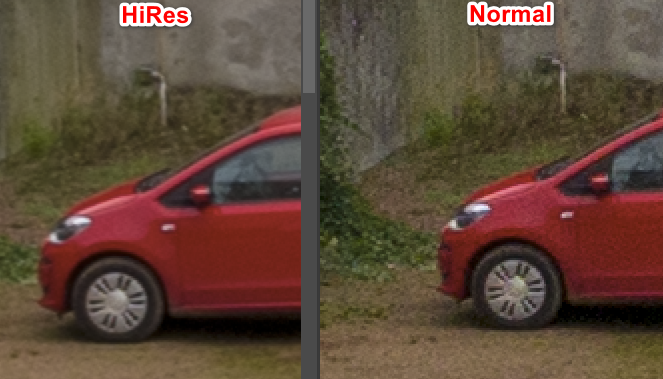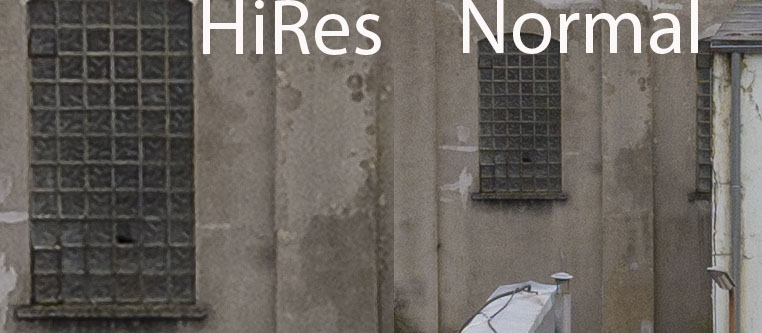Super resolution useful or just a hype
The release of the E-M 5 MK II cuaght the attention because the camera offers a resolution basic of 16MPix and offers a hires mode with 40MPix. With the recently released Panasonic G9 with a native resolution another camera offers a so called hires mode with 80Mpix in this case.
A marketing gag ?
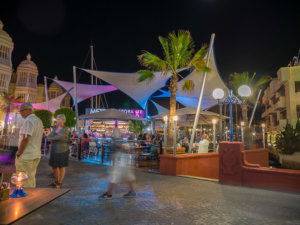
Since i don’t own one of the mentioned cameras i had to judge on the published images. The images in the so called HiRes mode seem ot offer a little bit more details, but can’t convinve overall.
Olympus always had an image stabilasation built-in in the cmaera body while Panasonic made up with the release of the Lumix G81. To achieve a body implemented stabalisation the sensor is moved to compensate for the users move. This works pretty good with the Lumix so i really did a capture with an exposure time of 1 sec. without the help of a tripod.
The sensor movement basically is used to realize the HiRes mode capturing a lot of images which are shifted just by one or 2 pixels, which are stitched within the camera.
The technique
For cameras with a biult-in HiRes mode the usage of a tripod is adviced. This doens’t avoid shadows and other problems if objects or people are moveing while you take the series of images. So mainly the Hires mode is a mode for static motives. At the beginning of 2015 the photographer Ian Norman published a super resolution mode and this article was republished by Petapixel, without soing any tests by themself.
Anyway you need Photoshop for this method and since a camera on a tripod can be moved by a pixel only the author does free hand capturing with a high frame rate. Even with a steady hand and at 6-8 pictures/second the images differ and are shifted. The problem with moving objects is the same as described above.
Realization with every camera brand
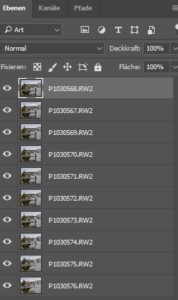 Because of the desciption in the article i just gave it try and captured a sequence at the highest frame rate both with the Lumix G81 and the Canon 5D MK II which were the basis for further image processing. With the Lumix i used my Panasonic 2.8/12-35mm lens and accordingly on the Canon 5D MK II the Canon 4.0/24-70mm IS . The aparture on both lenses was closed down 2 steps to assure a maximum optical performance.
Because of the desciption in the article i just gave it try and captured a sequence at the highest frame rate both with the Lumix G81 and the Canon 5D MK II which were the basis for further image processing. With the Lumix i used my Panasonic 2.8/12-35mm lens and accordingly on the Canon 5D MK II the Canon 4.0/24-70mm IS . The aparture on both lenses was closed down 2 steps to assure a maximum optical performance.
Just in case the described would work we could reach arround 64 MPix with the Lumix and a little over 80 Mpix with the Canon camera and this would be a higher resoultion like for example the Canon 5Ds R. But this leads to the question if it that easy who would buy a pixel monster.
The raw files were loaded a separate layers in Photoshop CC. By turning off the visibility of one or more layer you can easily control the pixel shift in the different captures, which is the base for this method. After this the image size was set to 200%.
I made a little video to describe the process in Photoshop :
Loading 10 or more images as separate layers and enlarging the images afterwards requires pretty much memory, on my system a complet setup required between 18 and 22GB ( in addition the memory of the graphic card was used by arround 2.5 GB) Changeing the stacking method of the different layers to median takes quite some time. If you want to avoid this you can set the opacity of the layers manually. And another thing with a lot of layers and converting the layer set to a smart object to enable changes later on requires between 2-4 GB fo disk space.
Results
First of all we end up with a resolution of 9.190×6.941px instead of 4.592×3.448px with the Lumix (with the Canon 5D MK II 5.616×3744 px compared 11.304x7531px), but how the results look like.
Just with a simple comparism view with the 100% view it is obviuos that the upscaled version of the image doesn’t rpovide as much details as the the regualr image even though in the later one the crop of the image is smaller naturally.
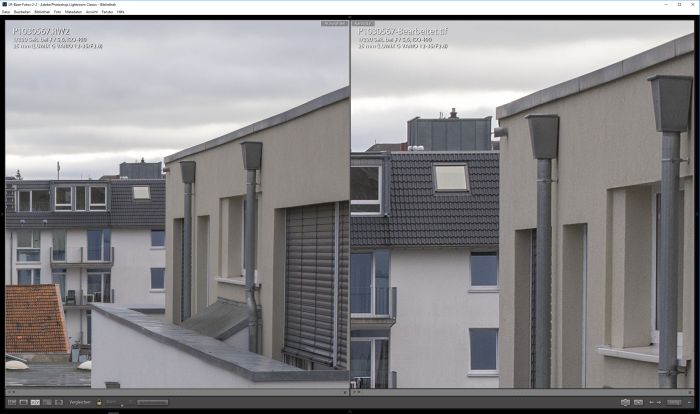 Das Ergebnis bleibt auch so, wenn man einmal in Details hineinzoomt:
Das Ergebnis bleibt auch so, wenn man einmal in Details hineinzoomt:
If you might plead thta this is because the Lumix G81 has a much smaller sensor (but why is the method implmented in mFT cameras) compared to a full frame camera just don’t worry the results look like the same with the Canon camera.
Just hype?
It is clear that this procedure wouldn’t offer results comparable to a cmaera with a ntive resolution of 50Mpix or more. And maybe the method in the camera is more precise, because here it is possible to work with a pixel shift of one pixel exactly. At least there is a little bit more reserve for very large prints.
What do you think or do you own a camera with a pixel-shift built-in? I would like your comments and experiences.
ciao tuxoche

